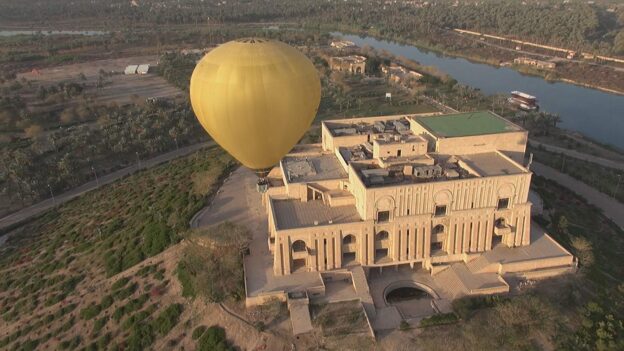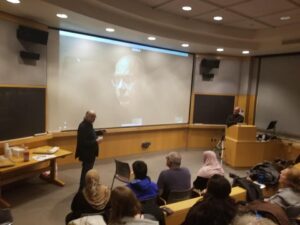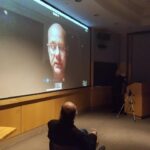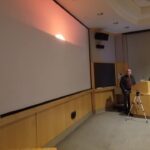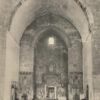Room 3-133 was packed on Saturday evening for the first US screening and discussion of Balloons Over Babylon, a documentary film produced and directed by Folke Rydén, who responded to audience questions after the screening via Webex. He was joined online by Dr. Muhamed Almaliky of Harvard’s Weatherhead Center for International Affairs, and Dr. Kanan Makiya, writer, Senior Fellow of the Crown Center for Middle Eastern Studies, and Professor Emeritus at Brandeis University, who attended the screening at MIT. The event was part of a joint series organized by AKDC@MIT and the Center for Arabic Culture (CAC), Boston. Murtada al-Hachami, whose project is the subject of the film, and his song Yousif had planned to join the discussion, but were unable to connect.
The film tells the story of Murtada al-Hachami, an Iraqi whose family had been obliged to flee Iraq when he was a child. He returns to Iraq as an adult, and is frustrated by the fact that so many in the world today only know about Iraq through its history of war, savage violence, and destruction. He embarks on a plan to organize a hot air balloon festival that will show another side of his country. 17 balloon crews from 5 countries agree to participate, but as planning proceeds ISIS (aka ISIL or Daesh) gains strength and launches a series of brutal attacks, threatening the whole enterprise. The film follows the efforts of Murtada to realize his vision, and the small number of intrepid balloon crews who help him to do so.
The story is inspiring and contains some stunning visual images of the balloons in the air, and of the site the area around the site of the ancient city of Babylon, which was designated as a World Heritage Site in 2002.
AKDC@MIT is grateful to MIT AV Services, Alma Riceh, and the Center for Arabic Culture for their help in organizing the screening. Next in the series is As I Opened My Eyes, a 2015 film from Tunisia, to be screened next month. Watch this site or the site of the CAC for an announcement.
—Michael A. Toler, Interim Program Head, AKDC@MIT
- Shot of a balloon over the palace, from the film.
- The world-renowned balloon pilot Ton Kurvers together with Murtada and his son Yousif in Babylon.
- Folke Rydén responds to a question video videoconference
- View of the audience
- AKDC Program Head Michael Toler tests the technology before the screening.
- Shot of a ballon over a palm grove, from the film
Unless otherwise noted, photos courtesy of the Center for Arabic Culture.
